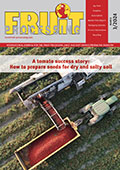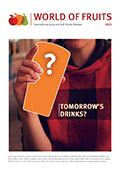Demonstrating the brand’s willingness to experiment and be at the forefront of the functional beverage sector, Moju said the latest launch speaks to emerging natural electrolyte trends by harnessing the power of pickles. A movement which, the company said, is set to “dominate” the global health and wellbeing sector over the coming year. This salty beverage is already making waves in the nutritional category in the US, gaining significant traction among athletes thanks to its functional benefits, according to the company.
The limited edition, cold-pressed shot is packed full of electrolytes, known for aiding muscle recovery, during and post-workout. Brewed using fresh pickles from UK’s ‘The Pickle House’ company, the shot has a unique, fruity yet salty favour. With 263 mg of natural electrolytes per shot, it feeds your body exactly what it’s craving during your workout.
Fitness fanatics have noticed the power of pickle juice really taking effect, especially when it comes to training longevity and recovery, making the juice the latest training drink of choice.
This is backed up by studies that have proven pickle juice works better than water for reducing muscle cramps. Moju has been a leader in the gut health sphere, making pickle juice an obvious choice for its latest limited edition. Moju has harnessed the pickle fever to create a product that is achieving cult status, supporting Moju’s position as one of the market leaders in the functional drinks sector.
For a limited time only, the Moju Monster Shot is available to purchase from 31st October online at https://mojudrinks.com/ – £19.75 for 12 x 60ml
In 2021, orange prices were high in São Paulo State (SP) and in the Triângulo Mineiro. In general, the industry in SP kept the demand high for fruits, and the low production limited the supply throughout the year. Although the remuneration (in BRL per box) had been higher, the profitability for many citrus growers was restricted, given that the limited productivity increased the cost of production per unit even more.
Fundecitrus (Citrus Defense Fund) indicated, in its estimate released in December/21, that the production in the citrus belt may reduce 1.7 % compared to 2020/21, totaling 264.14 million 40.8-boxes. Even with the positive biennial cycle in the 2021/22 season and the higher fruit load, oranges have presented a smaller size, which explains the lower production.
From May to August 2021, rainfall accounted for only 30 % of the regular volume for the period, according to data from Somar Meteorologia/Climatempo. Fundecitrus says that this scenario affected even irrigated orange groves (which correspond to 30 % of the citrus belt), due to the limited water supply in tanks. In some areas, frosts in July worsened the situation. Besides the small-sized oranges, the premature fruit drop was one of the worst in history.
Due to the low supply of fruits, orange juice processors boosted prices compared to the 2020/21 season. In the partial of the crop (from July to December/21), the average price in the spot market was 27.50 BRL/40.8-kilo box, harvested and delivered at the industry, for a nominal increase of 22.5 % in relation to the same period last year.
EXPORTS – As expected, orange juice (volume equivalent to concentrate juice) shipments finished the 2020/21 season with a 7 % decrease in relation to the previous (2019/20). From July/20 to June/21, shipments to all destinations totaled 1.03 million tons, according to data from Secex. The revenue, in turn, amounted 1.54 billion USD, 15 % down compared to the season before.
IN NATURA MARKET – Orange prices hit nominal records in most part of 2021. Increases are attributed to the limited supply in the 2021/22 crop, because of the low volume of rainfall and high temperatures in the second semester of 2020 and the low humidity in 2021. From the second semester of 2021 onwards, the low quality of fruits (due to a long period of dry weather and frosts in July) reinforced the upward trend. In the partial of the crop (from July to December/21), the average price for pear oranges (in natura) is at BRL 39.52/40.8-kilo box, on tree, 20 % up from the average in the same period in 2020, in nominal terms.
TAHITI – The price trend was atypical in 2021. Values were low in the first semester and in some periods of the second part of the year, and peak prices were less intense. From January to December, the average price for tahiti lime was at BRL 25.19/27-kilo box, harvested, 31.3 % lower compared to that in 2020.









